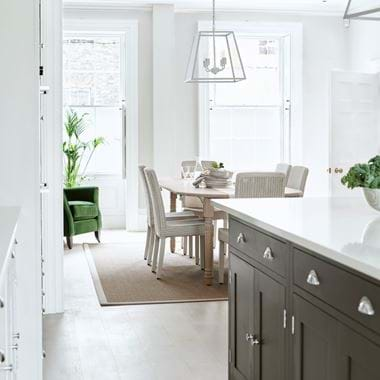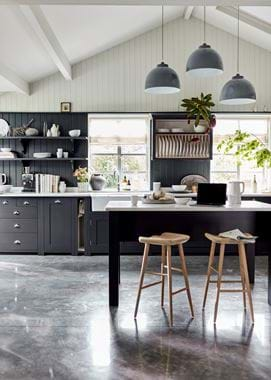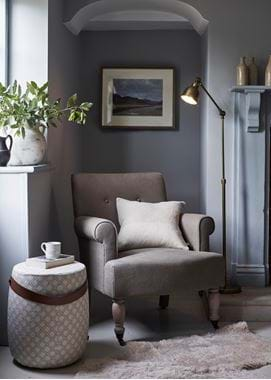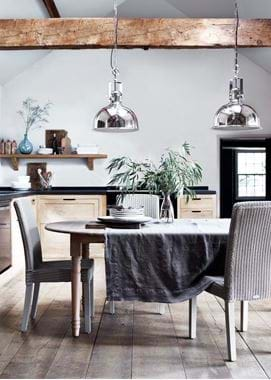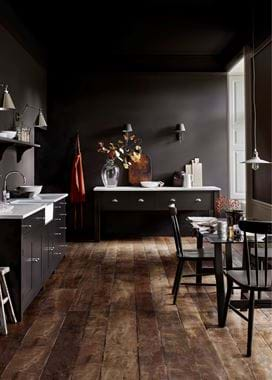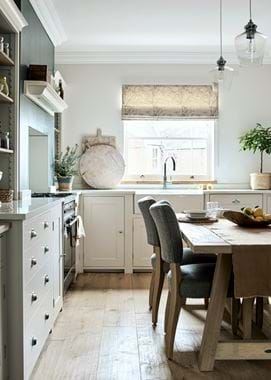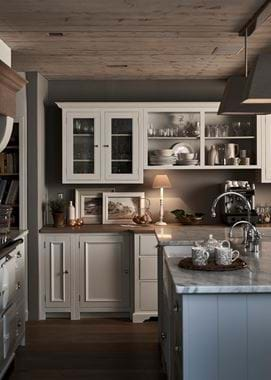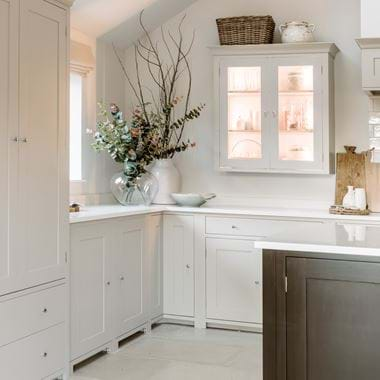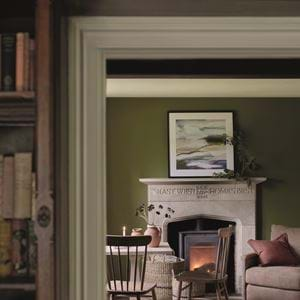How to: light an open plan kitchen and living room
How to: light an open plan kitchen and living room
Whether home for you is a studio apartment in the city where kitchen and living roll into one or a barn conversion with vaulted ceiling and capacious living quarters divided by the all-important kitchen island, knowing how to light each area is an art to master. Does your home fall into the open-plan kitchen-living room category? If so, read on as we phone a friend (or two) to discuss lighting plans with two of our home designers – George of Neptune Fulham and Annie of Neptune Hove and Hailsham – and the lighting questions they advise you ask yourself.
Where are the ‘task’ areas of your kitchen and living room?
George explained how lighting falls into three main categories: task lighting, accent lighting and ambient lighting. By focusing first on the areas where you’re going to call on lighting to help with the task to be carried out, you’ll build that first layer of lighting. For example, is your kitchen island where the sink and stove are set? If so, you’re likely to do lots of your food prep there so having pendant lighting over it with focused shafts of light illuminating the work surface will be a big plus. Or, have you snuck an armchair into a nook that’s going to be your reading spot? A floor lamp might be better here then to again, provide that directional beam of light onto your book.
Are there any features in the space to highlight?
With your first level of lighting defined, next look to any architectural elements of the open space to which you want to draw attention. George suggests picture lights to accent any framed artwork, or if there’s a feature fireplace to accentuate, Annie always reminds her clients that the aim is to accentuate it with lighting rather than overwhelming or distracting the focus. She advises discreet wall lights either side or perhaps a table lamp on accent tables either side of it.
Often, accent lighting can double up as ambient lighting too, as it will typically be a soft glow that brightens up different pockets within the space at different times of the day.
Think through when you’ll be using each part of the room and how to create lighting zones
“Creating lighting zones can help define different spaces within your home, and this is particularly useful in open-plan rooms,” says George. “Consider how you want to separate the space, and then you can use different types of lighting to differentiate them.”
Zones don’t have to be so regimented as kitchen versus dining versus living. A kitchen can have multiple zones in itself with the help of lighting. In the cottage kitchen of our co-founder John Sims-Hilditch pictured, the table lamp on the kitchen work surface communicates that this isn’t a busy-busy part of the room. This is where slow starts happen – morning coffees and after-noon cups of tea where soft lighting through a shade is all that’s needed.
It’s important to consider natural light in your zoning too. If you’re redesigning the room and have light flooding through one section of the space, perhaps that’s where you position your kitchen table for sunlit breakfasts. You might want to include back-up lighting for winter mornings and suppertime, but pendants are preferable here – nobody wants to dine under bright spotlights.
Have you placed lighting at different levels throughout the space?
A real must if you want your lighting to work as harmoniously as can be. If all of your light is ceiling-based, you’ll lack ambient, warmer, cosier lighting at lower levels in the room, so be sure to include layers of lighting that run throughout your co-joined rooms. George says: “In a kitchen, as a practical space, a lot of the lighting will be bright and from above – spotlights, pendants and so forth. Using warmer, lower-level lighting such as table lamps in your living area will help create a cosy, more intimate feeling.”
Annie, in agreement, adds: “It really is critical that use different levels of lighting to spark interest in the room, especially in an open-plan space. Combining a mixture of all or some spotlights, wall mounted lights, pendants, tabletop lamps, floor lamps and perhaps LED strip lights under any kitchen shelving or within glazed wall cabinets will ensure you have the practicality of task and architectural lighting mixed with mood lighting.
“Consider using spotlights which can be angled to shine on specific parts of your room, such as a cooker hood or feature double larder to create an impact. The use of mirrors will also change your lighting perspective. You don’t want any harsh light being reflected, so always choose to position your mirrors out of the way of strong, directional light. You can make a statement by framing mirrors with wall lights either side, which has a flattering glow, or think about using mirror behind open shelving with LED strip lighting either side to give you a contemporary lighting effect and highlight those trinkets and curiosities you have on display.”
Does your lighting complement your colour palette and vice versa?
A final point that Annie always reflects on with her clients is whether the colours and textures you want to use in your kitchen and living areas work as a while. She says: “In thinking about how you want your different zones to feel, consider the colours and mood in the room and how lighting will affect them. If you'd like a cosy, warm aesthetic to make you feel comforted then I would suggest using colours with yellow undertones, dark textile lampshades, brass or bronze hardware and bulbs which give a warm light. If you'd like a fresh, light and airy aesthetic I would suggest using colours with cooler, blue undertones, light linen lampshades and chrome hardware to reflect the light and bulbs which give a white light.”
With your lighting plan devised as a whole across your open-plan living space, the result will be a room that you can relax in as much as you can frantically prepare a feast with all the right spots aglow.
For further home design advice, simply arrange a virtual consultation with a designer from your local Neptune store here.

